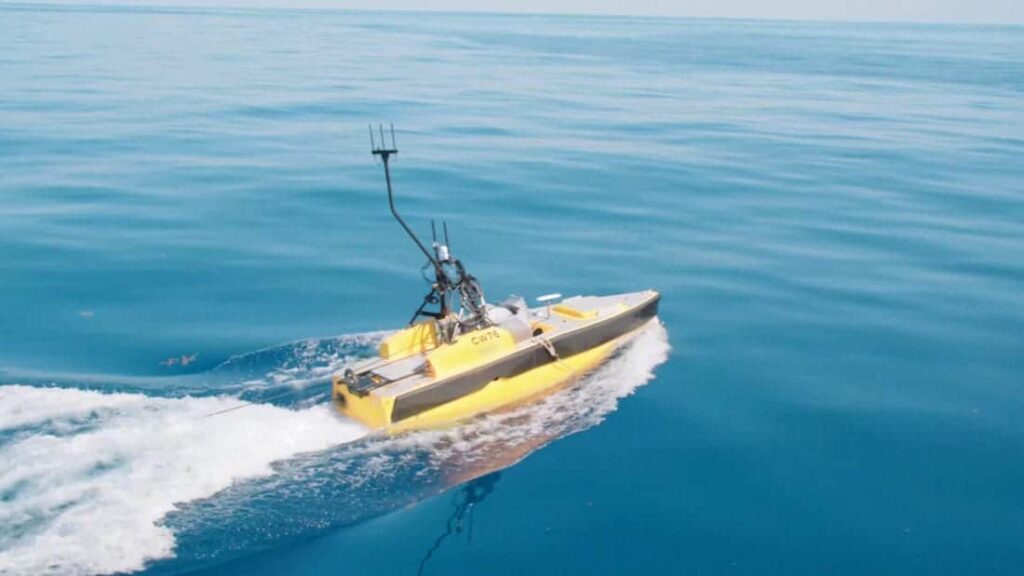ASV Global has announced that it has participated in the Littoral Acoustic Demonstration Center’s LADC-GEMM consortium summer expedition to the Gulf of Mexico to monitor marine mammals near the Deepwater Horizon oil spill site.
ASV Global provided a C-Worker 5 autonomous surface vehicle as a passive acoustic monitoring (PAM) survey platform during this year’s cruise. The C-Worker 5 is a 5-meter long aluminum hull vessel with a 57 HP direct drive diesel engine. The payload outfit on this cruise was a 200m passive acoustic monitoring line array kit provided by Seiche, carried and deployed from ASV Global’s remote controlled scientific winch.
C-Worker 5 was controlled and monitored from support vessel R/V Pelican by ASV Global’s expert team of operators mobilized from Broussard, Louisiana.
On this cruise, the vessel consistently collected PAM data, comprising of whale and dolphin vocalizations and their source location. C-Worker 5 completed 1100 kilometers of transects and comparison lines over total of 8 days traveling at speeds of between 4.5 and 5.5 knots.
The expedition, which included other partners such as Oregon State University, the University of Southern Mississippi, University of Louisiana at Lafayette, the University of New Orleans, Proteus Technologies, R2 Sonic, and Seiche successfully deployed five deep moorings, launched a glider, as well as running real time ASV-towed PAM and visual observations using the C-Worker 5.
LADC-GEMM have reported several acoustic and visual encounters with sperm whales and several dolphin species crediting the C-Worker 5’s ‘superb real-time data.’ C-Worker 5 provided over 90 real-time acoustic encounters with marine mammals during its 8-day operations in the Gulf of Mexico with 28 overlapping with visual encounters.
The C-Worker 5 mission also included a 15-min acoustic encounter with a beaked whale – the first ever recorded beaked whale vocalization on the ASV-towed array.
This research was made possible by a grant from The Gulf of Mexico Research Initiative. Data collected by the C-worker will be publicly available through the Gulf of Mexico Research Initiative Information & Data Cooperative (GRIIDC).



















